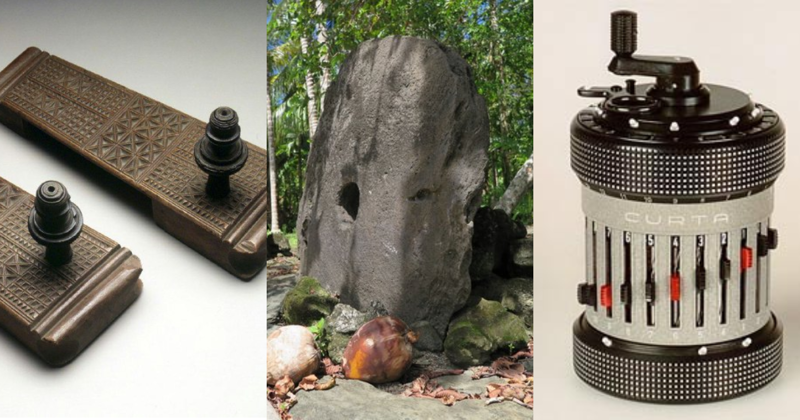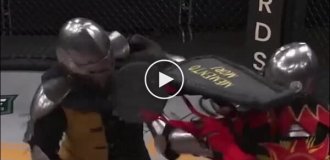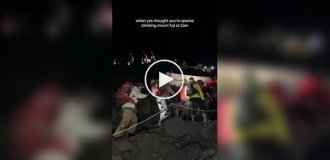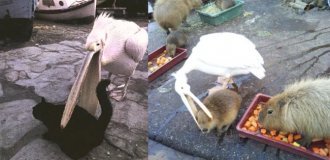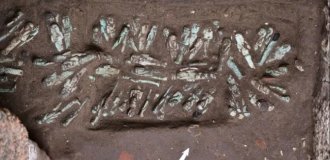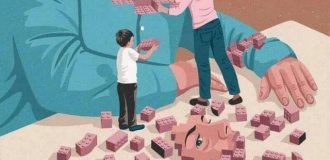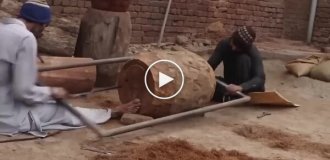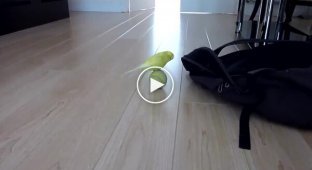Look carefully at the things in the pictures. For a modern person, the purpose of these objects is not always obvious; try to guess how they were used.
![How did you use it? Simple purpose of difficult things (13 photos)]()
1.
These are very uncomfortable shoes, but still shoes. The picture shows the sandals of Sultan Fumo Omari, East Africa, late 19th century.
![]()
2.
Curta pocket calculator. It could be used to add, subtract, multiply and divide. It was produced from 1948 to 1970, was famous for its reliability and was popularly nicknamed the “mathematical grenade”.
![]()
3.
The world's very first calculator. This arithmetic machine was invented by René Grillet de Roven in 1678.
![]()
4.
The Iron Lady in a piquant pose is just a device for removing shoes, the so-called “batman”. In order to remove the shoe without extra effort, you had to step on the figure’s face with one foot, and push the heel of the other foot between her legs.
![]()
5.
Flea trap. The rod was coated with blood, after which the flea trap was assembled. The little bloodsuckers jumped into the flea trap, sensing blood, but could not get back out. This is one of the simplest versions of the device, but flea traps were often made of precious metals and worn as expensive jewelry.
![]()
6.
Sunglasses. They protected the Eskimos' eyes from the bright sunlight reflected from the snow. The glasses shown in the picture were found on Baffin Island in Canada.
![]()
7.
Leeuwenhoek microscope from the 17th century. This device fits in the palm of your hand and is capable of magnifying 275 times. The point at the top of the plate is a lens, its diameter is no more than 0.5 mm.
![]()
8.
This is just a device for attaching a splinter - a light. The rays were stuck into metal curls, and a trough with water was usually placed under the light. “When Gavrilo stands, his snout is dirty,” they said in Rus' about the socialite.
![]()
9.
These futuristic helmets, similar to the helmets worn by the X-wing pilots of the Rebel Army from Star Wars, were used for brain MRI procedures in the 1980s.
![]()
10.
Throwing weapons of African tribes. This intricate metal boomerang is called a hunga-munga or kpinga, or simply lightning. They launched it horizontally and rarely used it in battle, only when all the spears and arrows were gone and the enemy had not yet been defeated. The fighters did not want to lose such a beautiful weapon, since, unlike the boomerang, the hunga-munga did not return.
![]()
eleven.
Esmarch's enema or mug looked exactly like this in the 19th century.
![]()
12.
These are not wheels or tombstones at all, but just money. About a thousand years ago, Rai stones began to be transported from the island of Palau (now a tiny island nation in the Pacific Ocean) to the islands of Yap (now part of the Federated States of Micronesia) and used as currency. The cost of a stone depended on the size, quality of workmanship and its history. For example, the most valuable stones were those during the transportation of which people died. Coins and banknotes have replaced the Rai stones, but these unusual symbols of prosperity can still be found in front of the houses of the wealthy islanders.
![]()
